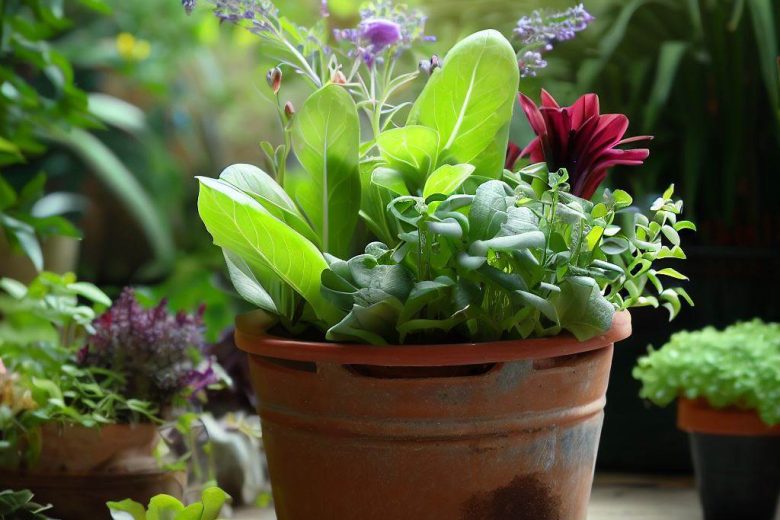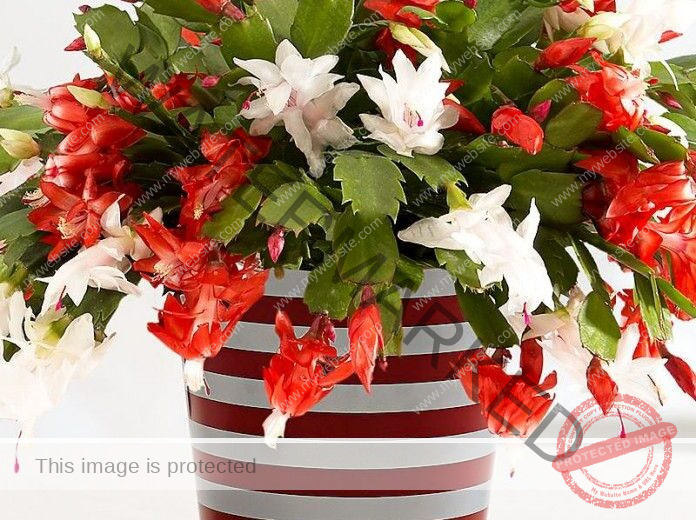Creating a cheerful garden can significantly enhance the beauty and ambiance of your outdoor space. One of the best ways to achieve this is by incorporating yellow perennial flowers. These flowers not only bring a burst of sunshine to your garden but also offer a long-lasting display of color, returning year after year with minimal maintenance. Yellow, a color often associated with happiness and warmth, can instantly lift your spirits and create an inviting environment for both you and your visitors.
Perennial flowers are an excellent choice for gardeners because they are durable and reliable. Unlike annuals, which need to be replanted every year, perennials come back each season, making them a cost-effective and sustainable option. Yellow perennial flowers, in particular, are versatile and can be used in various garden settings, from borders and beds to containers and rock gardens. They also attract pollinators like bees and butterflies, contributing to the health of your garden ecosystem.
In this guide, we will explore some of the best yellow perennial flowers that you can plant to create a cheerful and vibrant garden. We will cover a range of species, including their growing conditions, care requirements, and design tips to help you make the most of these sunny blooms. Whether you are a seasoned gardener or a beginner, this comprehensive guide will provide you with all the information you need to transform your garden with beautiful yellow perennials.
Benefits of Yellow Perennial Flowers
Long-lasting Color and Low Maintenance
Yellow perennial flowers are known for their longevity and low maintenance requirements. Once established, these plants can thrive for many years, providing consistent color and beauty to your garden. This means you can enjoy their vibrant blooms season after season without the need to replant annually, saving you both time and money. Many yellow perennials are also drought-tolerant and pest-resistant, making them an excellent choice for gardeners looking for hardy and resilient plants.
Attracting Pollinators
One of the significant benefits of planting yellow perennial flowers is their ability to attract pollinators such as bees, butterflies, and hummingbirds. Pollinators are crucial for the health of your garden as they help in the fertilization process, leading to the production of seeds and fruits. By incorporating yellow perennials, you not only enhance the visual appeal of your garden but also contribute to the local ecosystem. Plants like Coreopsis, Black-eyed Susan, and Yarrow are particularly effective at drawing in pollinators, ensuring your garden is buzzing with life.
Versatility in Garden Design
Yellow perennial flowers offer tremendous versatility in garden design. They can be used in various settings, from traditional flower beds and borders to modern containers and rock gardens. Their bright color makes them an excellent choice for creating focal points or adding contrast to a garden palette dominated by greens and blues. Additionally, yellow perennials come in a range of heights, textures, and bloom times, allowing you to design a garden with continuous color throughout the growing season.
Emotional and Aesthetic Appeal
The color yellow is often associated with feelings of happiness, warmth, and positivity. Incorporating yellow perennial flowers into your garden can have a significant impact on your mood and overall well-being. These flowers can create a cheerful and inviting atmosphere, making your garden a pleasant space to relax and unwind. Furthermore, the bright and sunny hues of yellow flowers can complement various garden styles, from cottage and country gardens to contemporary landscapes.
Top Yellow Perennial Flowers for Your Garden
1. Black-eyed Susan (Rudbeckia hirta)
Black-eyed Susan is a classic perennial that brings a bold splash of yellow to any garden. These flowers have daisy-like blooms with dark brown centers, which contrast beautifully with their bright yellow petals. Black-eyed Susans are easy to grow and thrive in full sun to partial shade. They are also drought-tolerant and can adapt to a variety of soil types, making them a versatile choice for different garden conditions.
Growing Tips: Plant Black-eyed Susans in well-drained soil and water them regularly until established. Deadhead spent flowers to encourage continuous blooming. They can be propagated by seeds or division in the spring or fall.
2. Coreopsis (Coreopsis spp.)
Coreopsis, also known as tickseed, is another popular yellow perennial known for its profuse blooming and easy care. These plants produce masses of small, daisy-like flowers that bloom from early summer to fall. Coreopsis is excellent for attracting pollinators and can be used in borders, rock gardens, and containers. They prefer full sun and well-drained soil.
Growing Tips: Water Coreopsis regularly during dry periods, and deadhead spent flowers to promote more blooms. They can be propagated by seeds or division. Coreopsis varieties range from low-growing types to taller ones, providing options for different garden spaces.
3. Yarrow (Achillea millefolium)
Yarrow is a hardy perennial that produces clusters of small, yellow flowers atop tall, fern-like foliage. It is known for its medicinal properties and ability to attract beneficial insects. Yarrow is drought-tolerant and thrives in poor, well-drained soil, making it an excellent choice for low-maintenance gardens. It blooms from late spring to early fall and can add a lovely texture to garden beds and borders.
Growing Tips: Plant Yarrow in full sun and avoid overwatering, as it prefers dry conditions. Deadhead spent flowers to encourage more blooms. Yarrow can spread aggressively, so consider dividing the plants every few years to control their growth.
4. Daylily (Hemerocallis spp.)
Daylilies are beloved for their stunning blooms and ability to thrive in a variety of conditions. These perennials come in a range of yellow shades, from pale lemon to deep gold. Daylilies are highly adaptable and can grow in full sun to partial shade, making them a versatile addition to any garden. They bloom from early summer to late fall, with each flower lasting just one day but being quickly replaced by new blooms.
Growing Tips: Plant Daylilies in well-drained soil and water them regularly during dry spells. They can be propagated by division, and dividing the clumps every few years will keep them vigorous and blooming profusely.
5. Yellow Coneflower (Echinacea paradoxa)
Yellow Coneflower, also known as Ozark Coneflower, is a unique perennial that stands out with its bright yellow petals and prominent cone-shaped centers. These flowers are excellent for attracting butterflies and other pollinators. Yellow Coneflowers prefer full sun and well-drained soil and are drought-tolerant once established. They bloom from mid-summer to early fall, adding a striking visual element to garden beds and borders.
Growing Tips: Water Yellow Coneflowers regularly during dry periods and deadhead spent flowers to encourage more blooms. They can be propagated by seeds or division. These plants can grow quite tall, so consider providing support if necessary.
Caring for Yellow Perennial Flowers
Soil Preparation and Planting
Proper soil preparation is crucial for the success of your yellow perennial flowers. Most yellow perennials prefer well-drained soil rich in organic matter. Before planting, amend the soil with compost or well-rotted manure to improve its fertility and structure. Ensure the planting site receives adequate sunlight, as most yellow perennials thrive in full sun.
Planting Tips: Dig a hole twice the width of the root ball and slightly deeper. Place the plant in the hole, ensuring the top of the root ball is level with the soil surface. Backfill the hole with soil, firm it gently around the plant, and water thoroughly to settle the soil. Mulch around the plants to retain moisture and suppress weeds.
Watering and Fertilizing
Consistent watering is essential, especially during the establishment period. Most yellow perennials require moderate watering, allowing the soil to dry slightly between watering sessions. Overwatering can lead to root rot and other diseases, so it’s crucial to maintain a balance.
Fertilizing Tips: Apply a balanced, slow-release fertilizer in the spring to promote healthy growth and abundant blooms. Organic fertilizers, such as compost or fish emulsion, can also be beneficial. Avoid excessive fertilization, as it can lead to lush foliage at the expense of flowers.
Pruning and Deadheading
Pruning and deadheading are vital practices for maintaining the health and appearance of your yellow perennial flowers. Deadheading, or removing spent flowers, encourages the plants to produce more blooms and prevents them from setting seed.
Pruning Tips: Prune the plants in early spring to remove dead or damaged growth and to shape the plants. Some perennials, like Yarrow and Coreopsis, benefit from being cut back by about one-third after their first flush of blooms to encourage a second bloom later in the season.
Pest and Disease Management
Yellow perennial flowers can be susceptible to pests and diseases, but proper care and maintenance can minimize these issues. Regularly inspect your plants for signs of pests, such as aphids, spider mites, and caterpillars. Use insecticidal soap or neem oil to manage pest infestations.
Disease Management Tips: Ensure good air circulation around your plants by spacing them appropriately and avoiding overcrowding. Water at the base of the plants to keep the foliage dry and reduce the risk of fungal diseases. If you notice any signs of disease, such as leaf spots or powdery mildew, remove and dispose of the affected plant parts to prevent the spread.
Incorporating Yellow Perennial Flowers in Your Garden Design
Creating Focal Points
Yellow perennial flowers are excellent for creating focal points in your garden. Their bright and cheerful color naturally draws the eye, making them perfect for planting near entrances, pathways, or seating areas. Use taller yellow perennials, such as Yellow Coneflower or Daylilies, to create vertical interest and add dimension to your garden design.
Combining with Other Colors
Yellow flowers pair beautifully with a variety of other colors, allowing you to create dynamic and visually appealing garden designs. Combine yellow perennials with purple, blue, or white flowers for a striking contrast. For a harmonious look, mix yellow with orange and red flowers to create a warm and inviting color palette.
Design Tips: Consider the bloom times of your plants to ensure continuous color throughout the growing season. Plant in groups or drifts for a more natural and impactful display. Mixing different textures and heights will also add depth and interest to your garden.
Using Containers and Raised Beds
If you have limited garden space or want to add color to patios and balconies, consider planting yellow perennials in containers or raised beds. Many yellow perennials, such as Coreopsis and Daylilies, adapt well to container gardening. Ensure your containers have adequate drainage and use a high-quality potting mix for best results.
Container Gardening Tips: Group containers of different sizes and heights to create a layered and cohesive look. Water containers more frequently, as they tend to dry out faster than garden beds. Rotate containers periodically to ensure even growth and blooming.
Attracting Wildlife
Yellow perennial flowers are not only visually appealing but also beneficial for attracting wildlife to your garden. By planting a variety of yellow perennials, you can create a habitat that supports bees, butterflies, and other pollinators. These insects play a crucial role in pollinating plants and maintaining a healthy ecosystem.
Wildlife-Friendly Tips: Provide a source of water, such as a birdbath or shallow dish, to attract and support wildlife. Avoid using chemical pesticides, which can harm beneficial insects. Instead, opt for organic and natural pest control methods.
Conclusion
Yellow perennial flowers are a fantastic addition to any garden, offering vibrant color, low maintenance, and numerous benefits for both gardeners and the environment. From the bold and cheerful Black-eyed Susan to the delicate and airy Yarrow, there is a wide variety of yellow perennials to suit every garden style and preference. By carefully selecting, planting, and caring for these sunny blooms, you can create a cheerful and inviting garden that will bring joy and beauty year after year. Whether you are looking to attract pollinators, create focal points, or simply enjoy the uplifting effects of their bright color, yellow perennial flowers are sure to enhance your outdoor space and provide lasting satisfaction.




